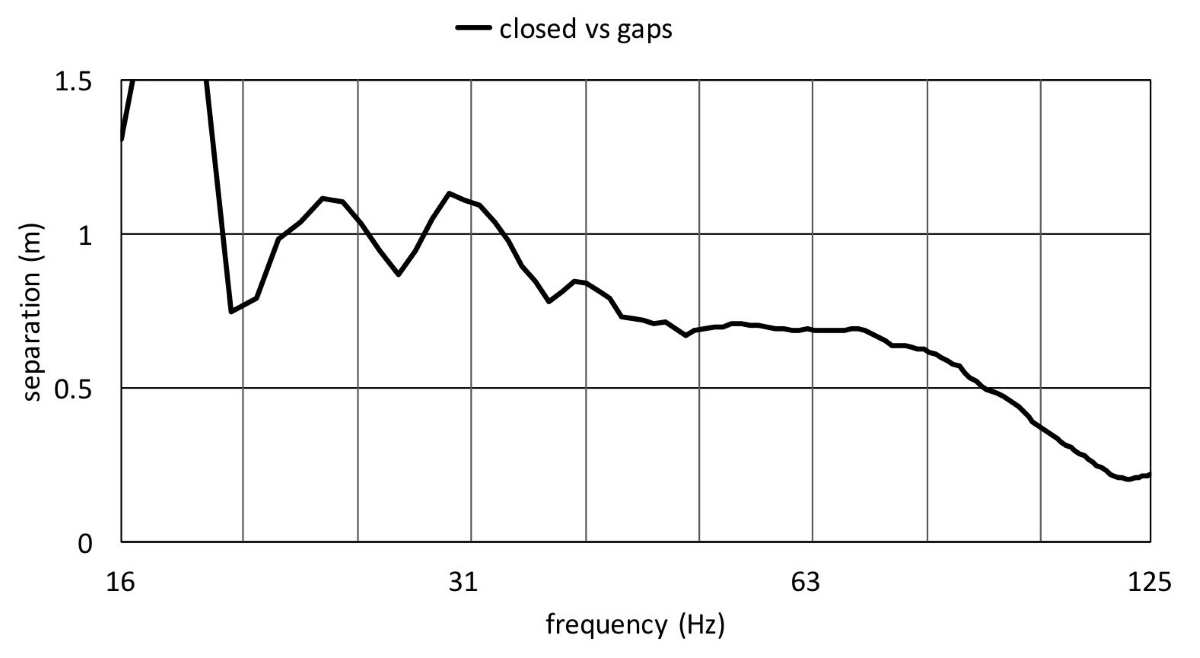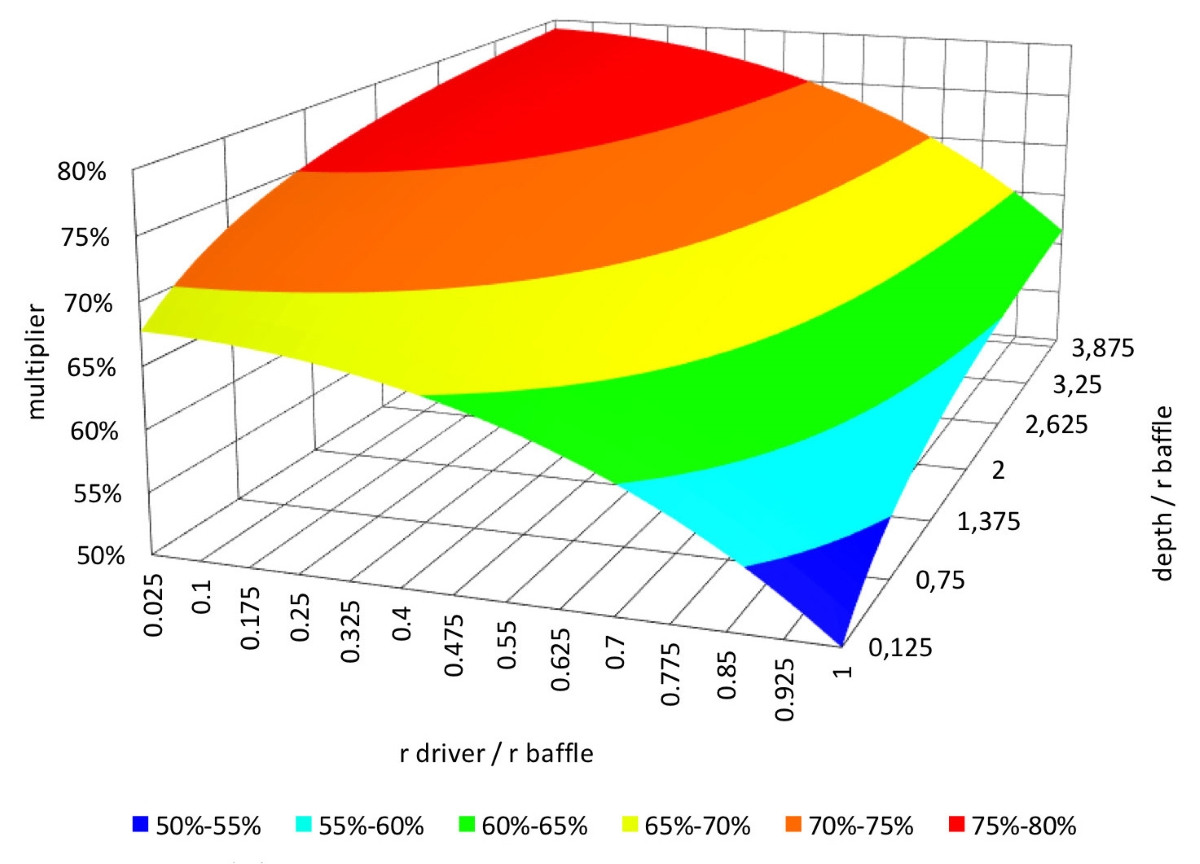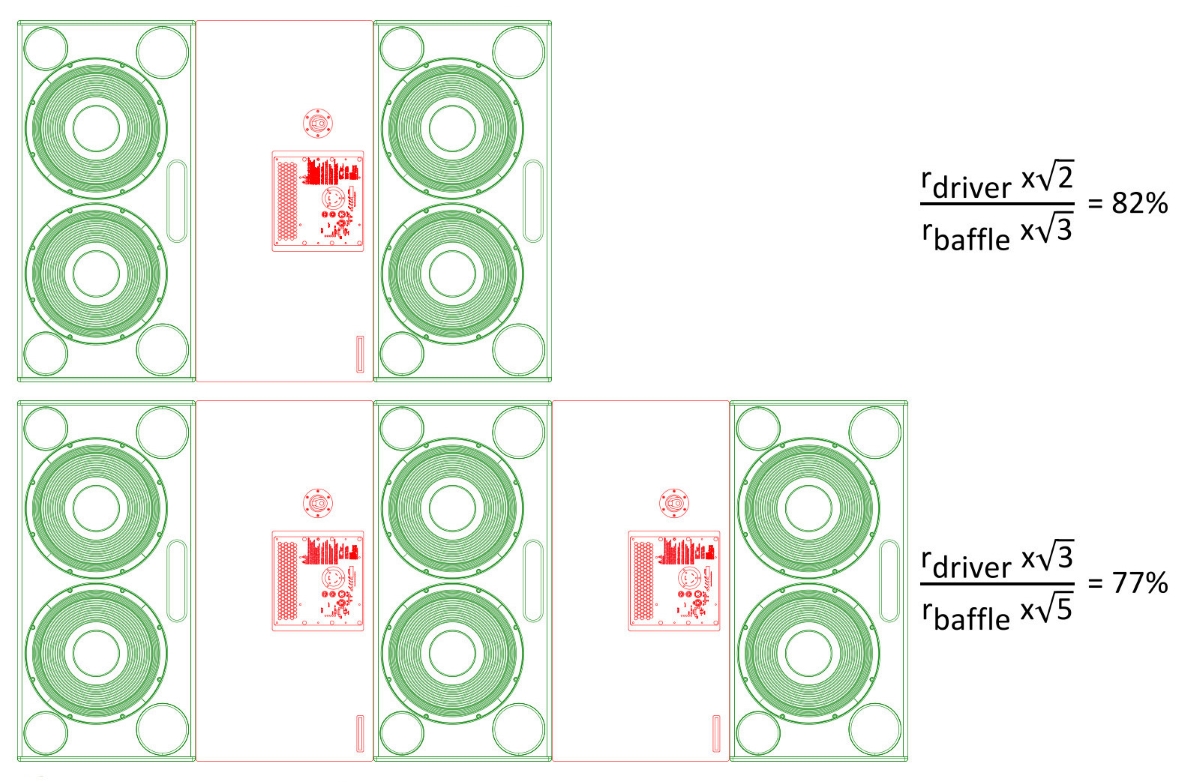
Where’s The Center?
In his 2006 AES paper called “The Acoustic Center: A New Concept for Loudspeakers at Low Frequencies,” professor John Vanderkooy presents analytical proof and compelling evidence suggesting that the acoustic center of subwoofers resides in front of the enclosures. This behavior persists up to frequencies where the physical size of the source is about half of a wavelength.
There are three variables that determine the acoustic center position for a subwoofer: driver radius, baffle radius and enclosure depth. Their effects can be condensed into a single chart (with respect to baffle radius) shown in Figure 7.
If the driver radius is relatively small with respect to the baffle radius (x-axis) and/or the enclosure is relatively deep with respect to the baffle radius (y-axis), the acoustic center is propelled outwards by a certain factor or multiplier (z-axis), away from the driver (on axis). This multiplier times the baffle radius will produce the acoustic center distance.

When we build stacks or arrays, the combined baffle area increases. However, due to the alternating orientation of subwoofers in gradient (CSA) configurations, the increase in combined baffle area typically exceeds the increase in combined cone area.
Figure 8 shows that the relative ratio of r driver to r baffle decreases when the array becomes bigger compared to a single loudspeaker where radius is derived from an area as if it were a perfect circular disk. This decreasing ratio (x-axis, Figure 7) propels the acoustic center outwards, away from the driver (on axis).

On the other hand, when the array becomes bigger, the enclosure depth remains constant but the effective baffle radius increases. Compared to a single loudspeaker, the relative ratio of depth to r baffle decreases and the acoustic center moves closer (y-axis, Figure 7) to the cabinet in the opposite direction. A push-pull situation.
The multiplier value shown along the z-axis shown in Figure 7 remains virtually constant over array size, but when applied to an also inherently larger baffle radius, the acoustic center will still move outwards which is consistent with my measurements.
It’s also interesting to note that the front-back-front configuration still shows a similar but lesser progression (smaller array) in terms of relative phase offset. If we convert the difference in relative phase offset between “closed” and “gaps” from Figure 4 into distance, we get Figure 9.

Closing The Gap
It’s readily apparent that the array without gaps (closed) increases the separation on a frequency dependent basis between acoustic centers on both (front- and rear-facing) sides of the array due to a larger combined baffle.
In accordance with Vanderkooy’s paper, lower subwoofer frequencies will exhibit this behavior more. Simple (pure) electronic delay, as mentioned before, can’t fix this. It’s unlikely that this behavior, which clearly changes with frequency, is the result of flight and/or “wraparound” times caused by constant physical detours and/or increased path lengths.
However, breaking up the baffle for gradient (CSA) stacks and arrays not only restores the level imbalance but also the time offset. Bringing us close again to the “center of tranquility at the eye of the storm.” The configuration becomes easier to predict based upon the performance of a single subwoofer.
As noted in my previous article, the challenge becomes to determine the minimum required gap size for improved rejection without a noticeable increase in lobing. In fact, colleagues with whom I shared my preliminary findings started experimenting with air gaps between adjacent enclosures as little as the size of a fist and reported improved rejection.
My own observations during confirm this. I intend to further experiment with simple spacers between vertically stacked subwoofers, and it might very well turn out that even the casters underneath a dolly or wheel board could prove advantageous.
